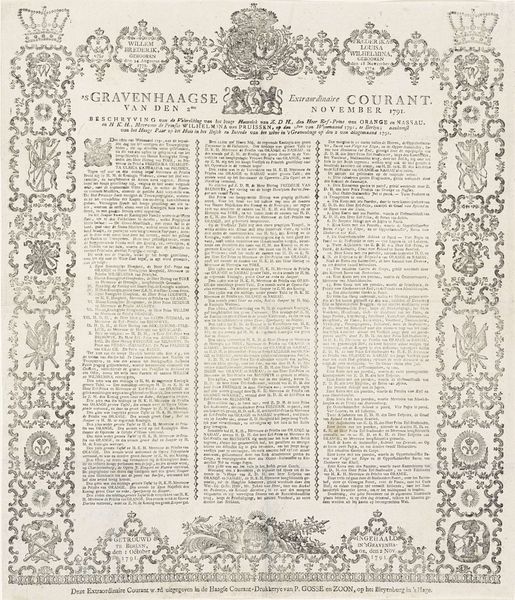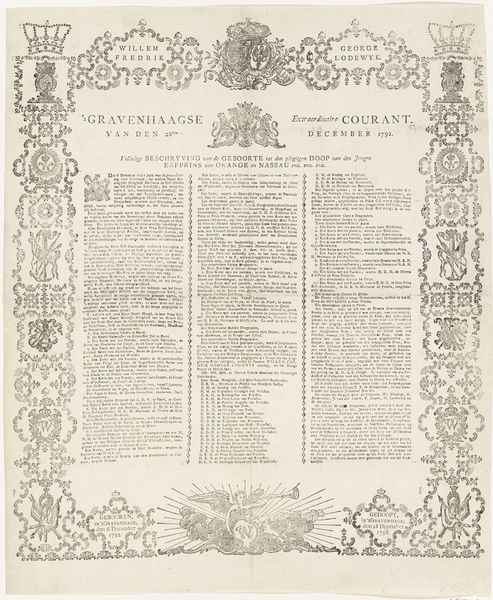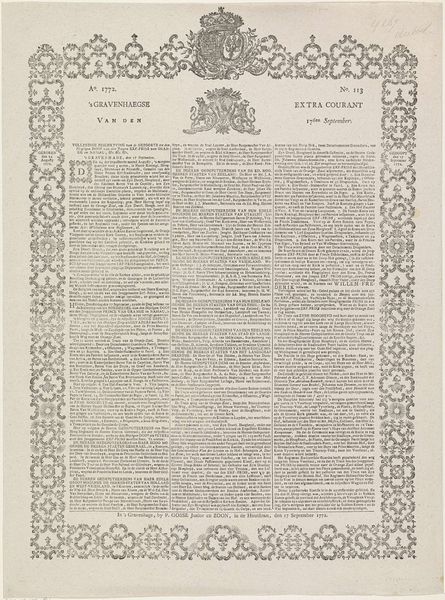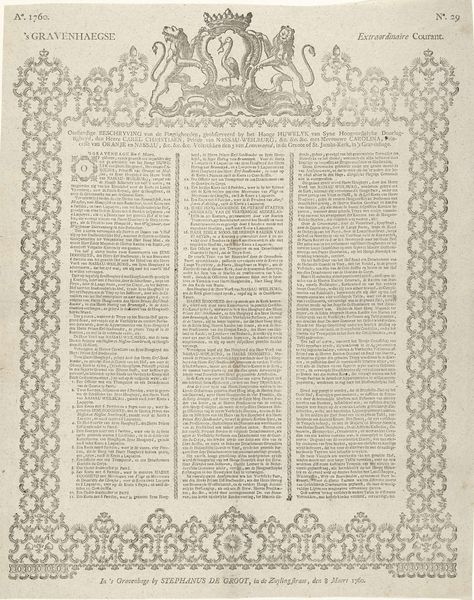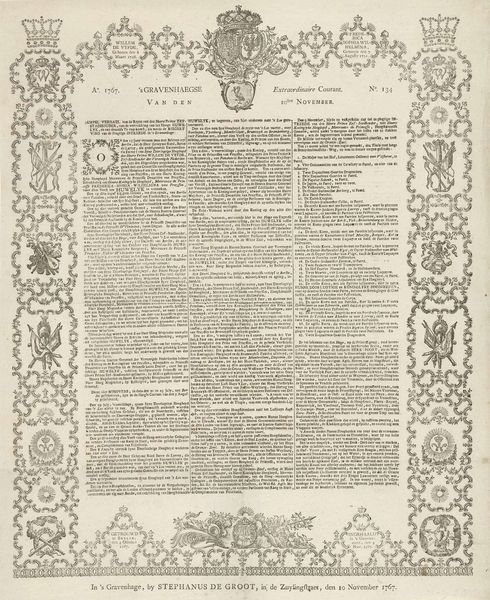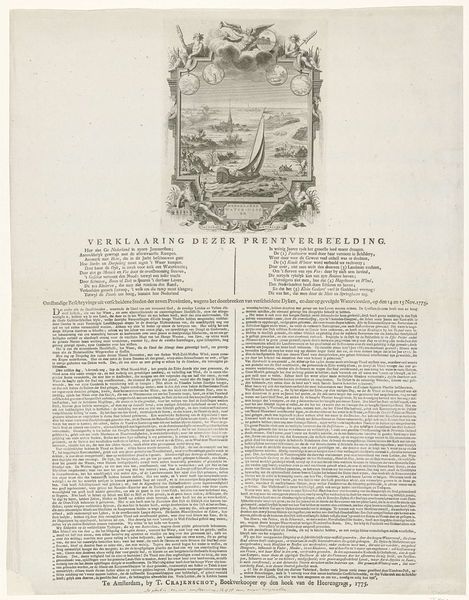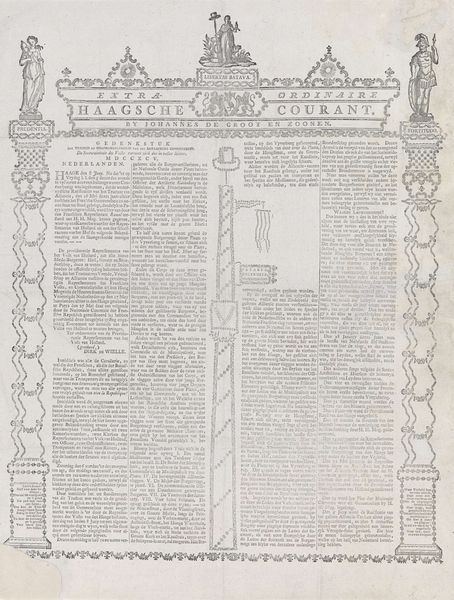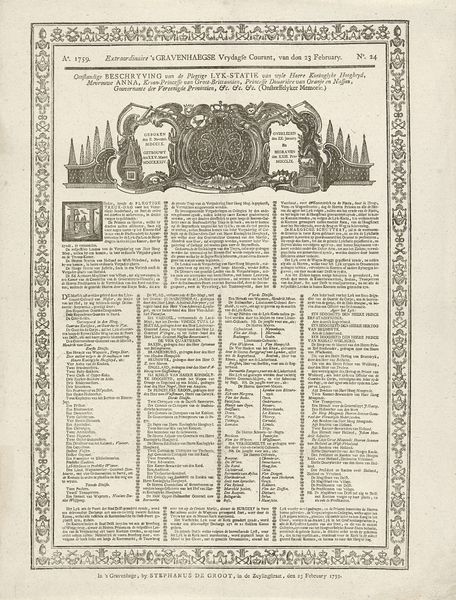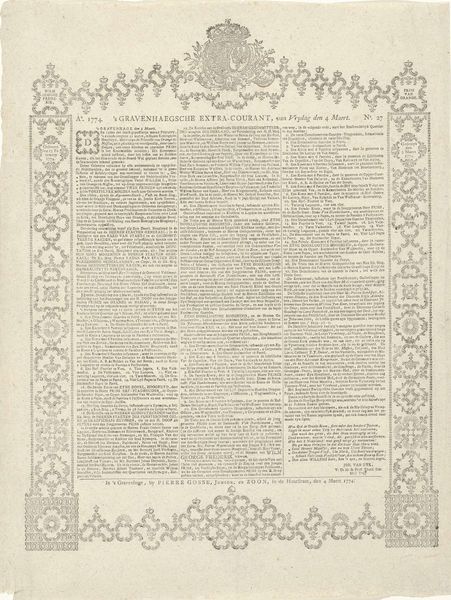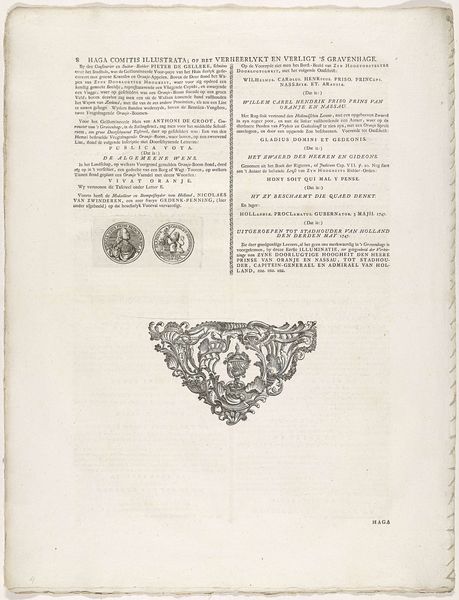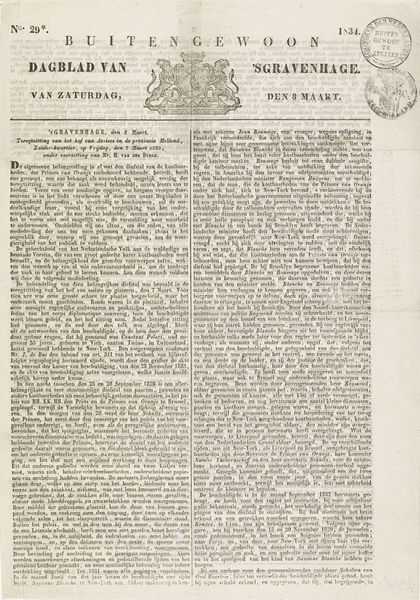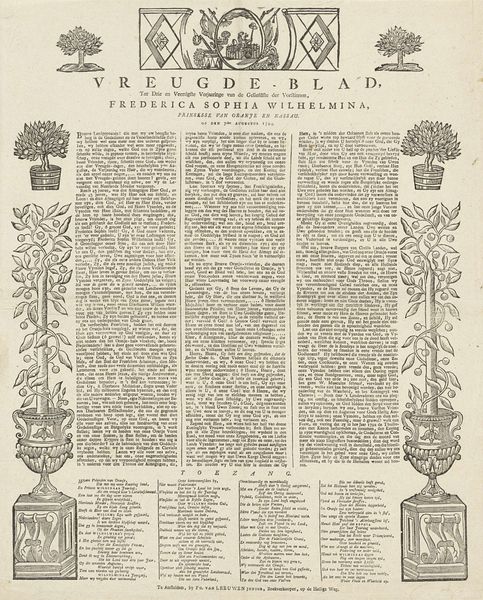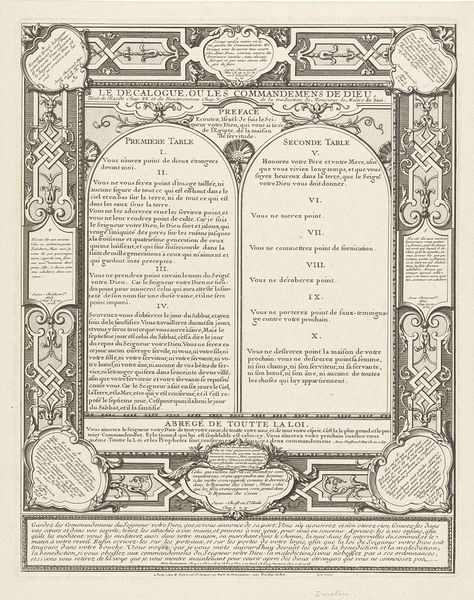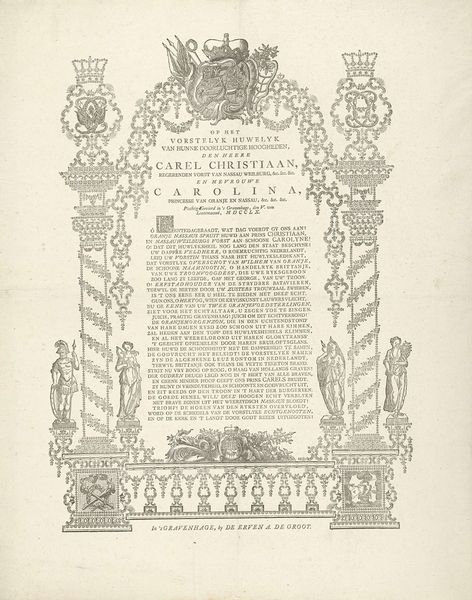
's Gravenhaegse Maendagse Na-Courant van 10 maart 1766 over de installatie van Willem V als erfstadhouder Possibly 1766
0:00
0:00
Dimensions: height 458 mm, width 370 mm
Copyright: Rijks Museum: Open Domain
Editor: This is 's Gravenhaegse Maendagse Na-Courant van 10 maart 1766 over de installatie van Willem V als erfstadhouder,’ possibly from 1766, by Stephanus de Groot. It's an engraving on what looks like aged paper. I’m immediately drawn to the ornate border – it seems to both frame and almost overwhelm the central text. What visual elements stand out to you the most in this piece? Curator: Certainly, the dialectic established between text and ornament presents itself as the primary visual field of analysis. Observe how the density of the typographic forms generates a distinct textural counterpoint to the repetitive, almost geometric, motifs adorning the periphery. Do you perceive how the artist’s strategic employment of symmetry, not merely within the border itself, but also in the hierarchical disposition of symbolic elements - armorial bearings, allegorical figures - conditions the viewer’s interpretive pathways? Editor: I see what you mean. The symmetry does create a sense of order, almost like a rigid structure, contrasting with what I imagine would be the more chaotic nature of news. Does that order serve to legitimize the content? Curator: Indeed, such architectonic principles perform a vital semiotic function. The insistent order, rigorously deployed, may indeed serve to stabilize and legitimize the represented authority. But what if we consider how these compositional strategies simultaneously operate as techniques of containment, or even… domination? Consider the act of reading. Does the border facilitate or impede that act? Editor: That's a good point, I hadn't thought of it that way. Maybe the decoration acts as a kind of filter. Curator: Precisely. And what does such a filter signify in terms of power dynamics? Considering how such elements interact invites, nay, demands, a comprehensive and continuous investigation of aesthetic intention.
Comments
No comments
Be the first to comment and join the conversation on the ultimate creative platform.
